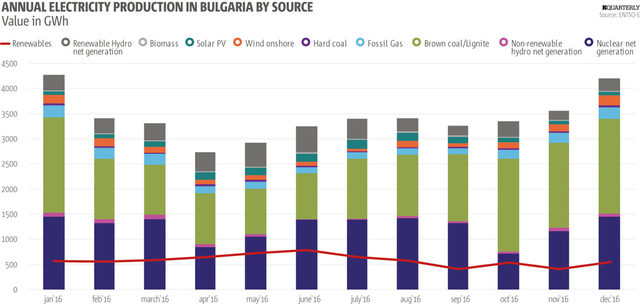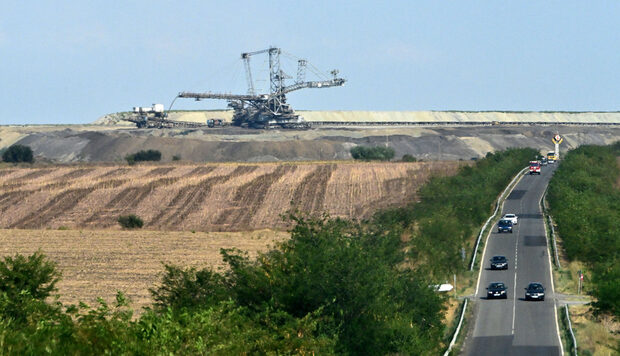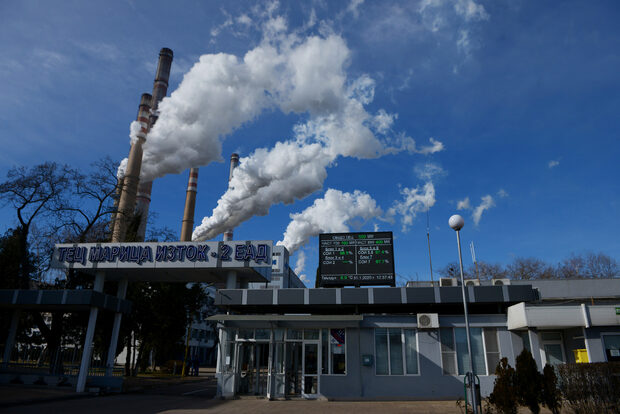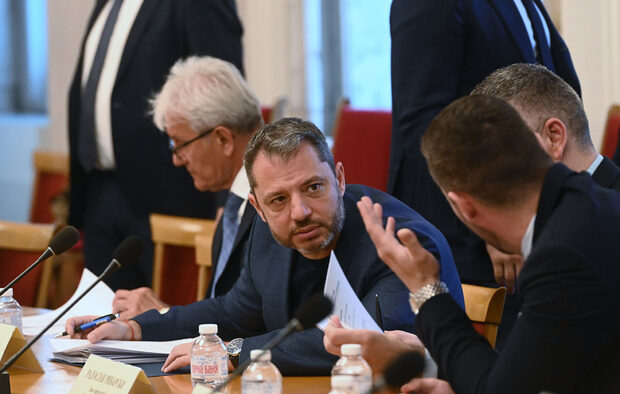If European Union climate-energy plans are to be believed, to meet their goals in fifteen years from now Bulgaria will have to close most of its coal-fired power plants, the country's economy will have achieved a twofold improvement of its energy efficiency and miners, instead of organizing marches to destroy photovoltaic farms, will rush to install PV panels on the roofs of their homes.
The so-called Winter Package - a mammoth legislative act of 1000 pages proposed by the European Commission at the end of 2016, requires that around 50% of the electricity in the EU countries be produced from renewable sources by 2030. At the same time, in order for the EU to achieve its goal of 40% reduction of its greenhouse gas emissions, the role of the coal-fired thermal power plants (TPP) has to be significantly reduced. To facilitate the growth of clean energy and to reduce its cost, the Commission wants to encourage final consumers to use more renewable energy sources (RES). Every household will be turned into an energy producer either by a photovoltaic rooftop, heat pump or active demand response.
As with all ambitious EU plans, it is still unclear how much will be fulfilled. But the path is set - the new EU energy and climate legislation seriously challenges the Bulgarian energy system. Lignite coal-fired power plants - the dirtiest and most inefficient TPPs, account for more than 40% of electricity production in Bulgaria. At the same time, the Bulgarian public sees in the RES growth not clean energy, but the main driver of increased end-consumer prices. As a result, all RES support schemes were terminated and very few renewable power plants have been installed since 2014.
Coal is not dead
Most of the coal-fired TPPs are relatively modern (with one or two rotten apples) and can operate easily up to 2030 if there is no new environmental regulation.

The proposal of the Commission doesn't place specific restrictions on coal. On the contrary - it mandates the end of priority dispatch for renewable sources of energy, which has made traditional power plants stay idle when the sun was shining or the wind was blowing. More than that, the envisaged sixfold increase of CO2 allowance prices by 2030 is not carved in stone. Now they trade for approximately 5 euro per allowance, although for the Emissions Trading Scheme to be effective they have to cost around 20 euro. The attempts to raise their price in the last two years failed miserably.
But there are hidden restrictions for the coal-generated energy. For example, coal power plants with emissions of more than 540 grams of CO2 per megawatt hour - i.e. all the lignite TPPs in Bulgaria, will be unable to receive capacity payments (remuneration to stay in reserve). As the intermittent RES are expected to grow, the back-up function of the classic electricity plants will become their main mode of operation and it will be difficult for the Bulgarian TPPs to switch.
Bulgaria could benefit from the EU Emissions Trading System (ETS) derogation that permits it to distribute free CO2 allowances to the TPPs. It will definitely keep them competitive, but in a longer run there will be a major problem. Half of the lignite power plants have long-term contracts and even if they become too expensive to run, they need to remain in operation. As a result, if the CO2 allowances become very expensive, it is the cheapest coal-fired TPPs that will need to be mothballed.
Burned by the sun
Since 2012 three consecutive governments in Bulgaria have taken many measures to restrict the expansion of renewable energy sources in order to keep retail prices under control. Now it is impossible to build utility-scale solar or wind installation in Bulgaria.
But the situation will soon change. Even now there are some projects throughout the world that achieve competitive prices. Chile and Dubai have received bids at the stunningly low $30 per MWh for electricity from photovoltaics installations with unsubsidized long-term contracts. These are still isolated cases with very favourable conditions (the project in Dubai probably enjoys almost free financing), but they show the direction the technology is heading.
In five to ten years the installation prices will fall in Europe as well and it will not be the government policies that will drive the development of RES, but people who would prefer to break free from their electricity suppliers. The scale of this new power supply is simply astonishing. If every one of the 3 million households in Bulgaria installs 2 kWp of photovoltaic panels, this will equal half of the electricity production capacities currently installed.
In 2016, renewable sources supplied almost 20% of Bulgaria's electricity consumption, with photovoltaic and wind installations providing only 6% of it. Even this small input caused some problems, because of their intermittent production. In 2014 and 2015 Bulgaria experienced severe problems with overproduction of electricity during the summer months. Not only the output of renewable energy sources, but even the nuclear power plant Kozloduy's production had to be curtailed. At the same time, in January 2017 the Bulgarian electricity system was forced to resort to extreme measures like banning electricity exports in order to guarantee domestic consumption in harsh winter weather.
Those problems will certainly exacerbate when the RES's share in electricity production begins to expand. In the next ten years Bulgaria will need to ramp up its efforts to build a viable strategy with new technologies as its pivot. They require utility-scale storage facilities (like new pump-storage hydro plants), new grid developments and a new regulatory framework to give some breath to the legacy companies which would still remain the backbone of the Bulgarian energy system. This will be an enormous task for the Bulgarian authorities which still grapple with basic stuff like prices that reflect power production costs or closing dirty power plants that have been for years in violation of the environmental standards.
If European Union climate-energy plans are to be believed, to meet their goals in fifteen years from now Bulgaria will have to close most of its coal-fired power plants, the country's economy will have achieved a twofold improvement of its energy efficiency and miners, instead of organizing marches to destroy photovoltaic farms, will rush to install PV panels on the roofs of their homes.
The so-called Winter Package - a mammoth legislative act of 1000 pages proposed by the European Commission at the end of 2016, requires that around 50% of the electricity in the EU countries be produced from renewable sources by 2030. At the same time, in order for the EU to achieve its goal of 40% reduction of its greenhouse gas emissions, the role of the coal-fired thermal power plants (TPP) has to be significantly reduced. To facilitate the growth of clean energy and to reduce its cost, the Commission wants to encourage final consumers to use more renewable energy sources (RES). Every household will be turned into an energy producer either by a photovoltaic rooftop, heat pump or active demand response.












